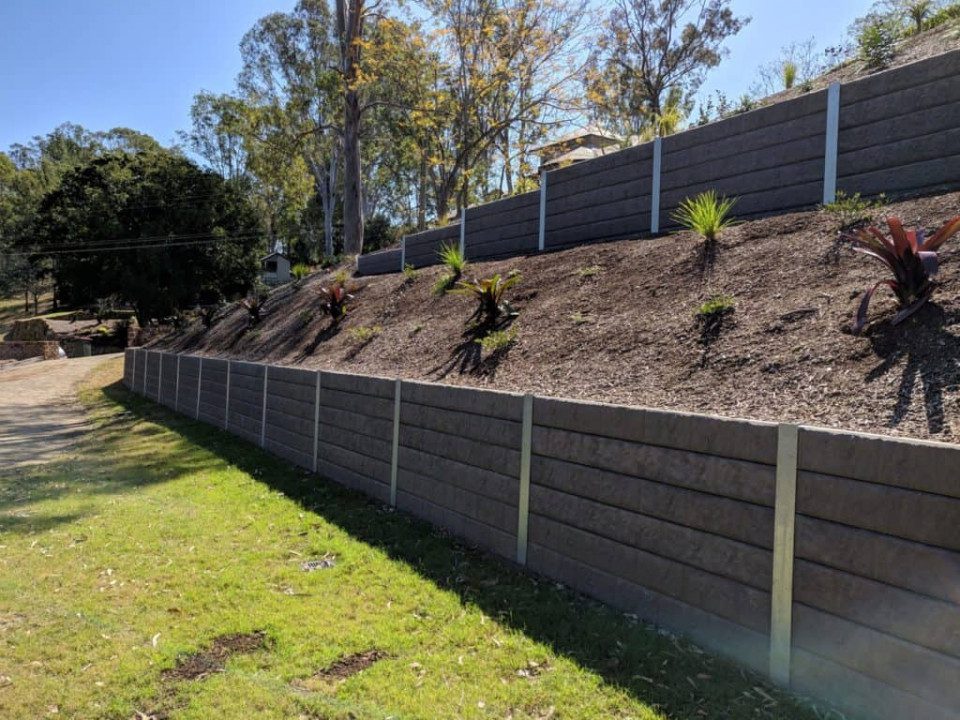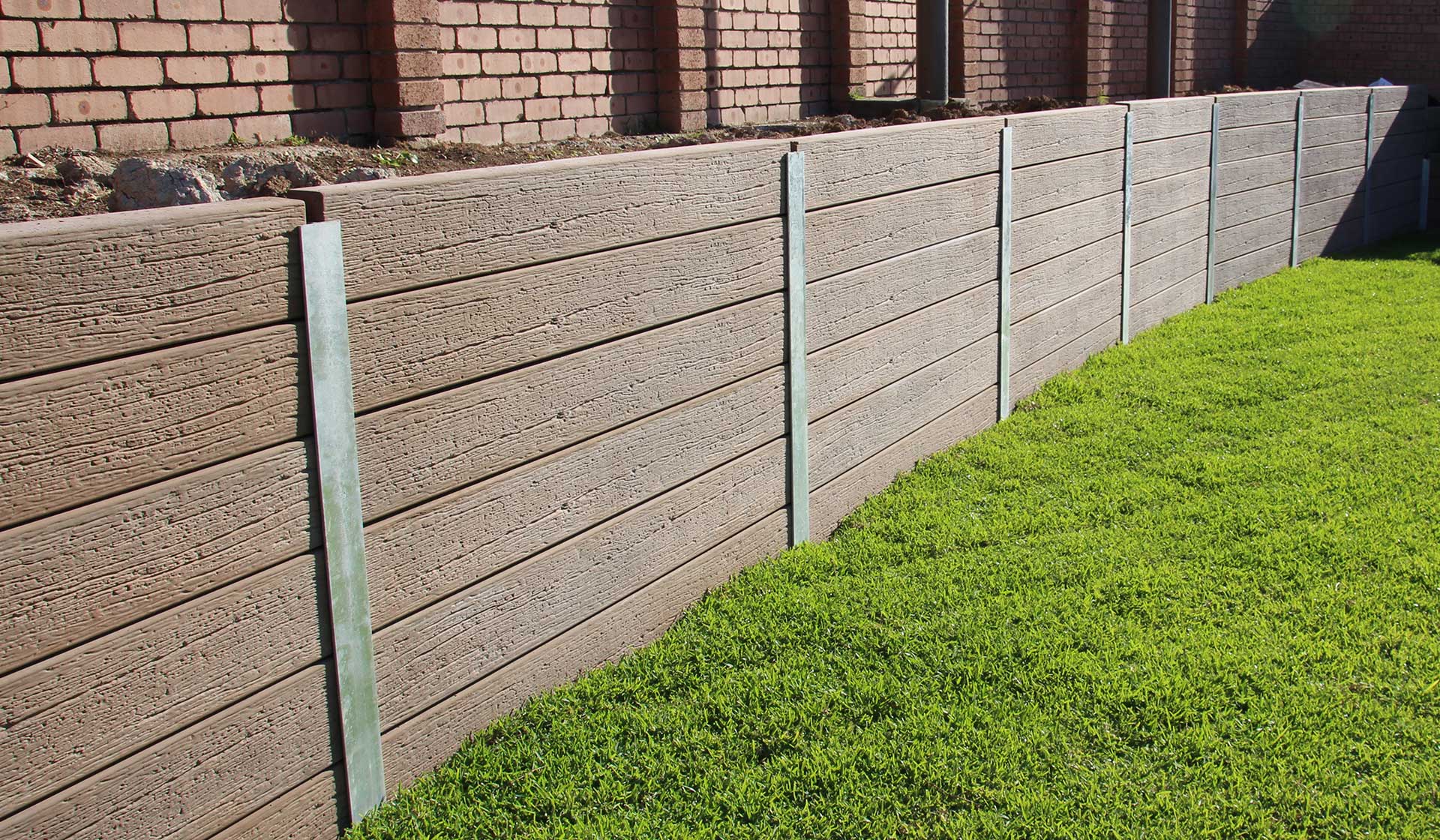Economical and Top Notch Retaining Walls Sunshine Coast: What to Know
Economical and Top Notch Retaining Walls Sunshine Coast: What to Know
Blog Article
Ensuring Structural Integrity: The Significance of Appropriately Built Maintaining Wall Surfaces in Protecting Against Incline Failing
In the realm of civil engineering and building and construction, the relevance of appropriately constructed preserving walls in averting incline failure can not be underrated. By exploring the detailed interplay in between these aspects, a much deeper comprehension of the pivotal function that retaining wall surfaces play in preserving architectural integrity and stopping slope failing arises.
Function of Retaining Walls in Security
The indispensability of preserving walls in making sure incline stability is extremely important in civil design practices. Maintaining walls serve an essential function in preventing soil disintegration, managing water overflow, and keeping the structural integrity of inclines. By sustaining near-vertical or vertical grade adjustments, retaining walls aid to rearrange lateral pressure put in by the dirt, thereby decreasing the danger of incline failing.
One key function of maintaining wall surfaces is to neutralize the force of gravity acting on the soil mass behind them. This is accomplished via correct design and construction, which thinks about aspects such as dirt type, wall surface elevation, drainage provisions, and potential surcharge lots. By effectively retaining soil within defined limits, these structures assist to support inclines and protect against landslides.
Furthermore, retaining walls contribute to the aesthetics of landscapes while providing functional advantages. They can develop terraced levels for landscaping, support streets or structures on hillsides, and boost the total use of sloped surface. Basically, maintaining walls play a crucial function in preserving slope stability and ensuring the safety and security and long life of civil design jobs.
Elements Influencing Wall Surface Efficiency
Elements that influence the performance of preserving wall surfaces include soil properties, wall surface design, and external loads. Dirt properties play a vital role in determining the security and performance of a preserving wall surface. Aspects such as soil kind, cohesion, internal rubbing angle, and groundwater conditions can influence exactly how well a wall maintains the soil behind it. The layout of the maintaining wall is an additional essential variable that influences its effectiveness. Correct wall layout thinks about elements like wall surface height, wall type (e.g., gravity wall surfaces, cantilever walls), reinforcement products, drain systems, and construction methods to ensure the wall surface can withstand the side stress put in by the preserved soil. In addition, external tons, such as additional charge tons from surrounding structures or web traffic, seismic pressures, and water pressure, need to be thoroughly evaluated during the layout and building stages to make sure the wall can properly stand up to these exterior forces. By thinking about these variables thoroughly, designers can create keeping wall surfaces that effectively avoid slope failing and make certain long-term structural stability.
Layout Factors To Consider for Preserving Wall Surfaces
Including the crucial facets of dirt buildings and external loads into the structural design procedure is important for establishing efficient maintaining wall surfaces that make sure slope stability. When designing keeping walls, engineers should very carefully examine the attributes of the bordering dirt, including its compaction, water drainage, and kind properties. Comprehending these dirt properties is essential for determining the proper wall surface density, support, and height required to endure the side stress applied by the dirt mass.
Furthermore, outside tons such as additional charge tons from close-by frameworks or web traffic, along with seismic forces, should be taken into consideration during the style stage. These lots can substantially influence the stability and efficiency of a retaining wall, demanding using appropriate layout techniques and materials to mitigate potential failing risks.
In addition, the selection of suitable products, such as concrete, stone, or wood, need to align with the aesthetic needs and site-specific conditions. Variable of safety factors to consider, water drainage provisions, and building and construction methods are additionally crucial aspects that affect the total layout and performance of retaining walls in avoiding incline failure. By thoroughly considering these style factors to consider, designers can make certain the structural stability and lasting security of retaining walls.

Building And Construction Best Practices for Durability
When building preserving wall surfaces for optimum longevity and longevity, adherence to industry-standard strategies and meticulous focus to information are extremely important. To make certain the longevity of a maintaining wall surface, correct website preparation is vital. This includes sufficient compaction of the soil, proper drainage systems, and ensuring the wall surface's structure is sound. Utilizing premium materials, such as cinder blocks or natural rock, is essential for the durability of the structure. In addition, utilizing competent professionals with experience in creating keeping walls can dramatically affect the resilience of the last product.
Integrating reinforcement methods, such as geogrids or steel bars, can enhance the structural honesty of the maintaining wall surface and protect against potential failures. Correct backfilling procedures, including compaction and drain factors to consider, are also important for the wall surface's sturdiness. Normal description upkeep and evaluations are suggested to resolve any signs of wear, erosion, or architectural concerns promptly. By complying with these building finest techniques, retaining walls can stand up to the examination of time and properly prevent slope failure.
Significance of Appropriate Upkeep
Regular maintenance is necessary for preserving the architectural integrity and performance of keeping wall surfaces with time. Neglecting upkeep can bring about concerns such as disintegration, splits, or also total failing of the wall surface, endangering the security of the incline it sustains. To ensure that retaining walls remain to do their designated feature properly, routine evaluations should be performed to determine any indicators of deterioration. These inspections can aid in finding early caution indications of potential issues, enabling prompt repair work to be performed before the issues intensify (Retaining Walls Sunshine Coast).

Final Thought
Finally, preserving walls play an important duty in ensuring structural stability and stopping incline failing. By taking into consideration variables influencing wall efficiency, sticking to make factors to consider, following building finest practices, and implementing proper maintenance, the durability of retaining wall surfaces can be made best use of. Retaining Walls Sunshine Coast. It is vital to acknowledge the relevance of appropriately created maintaining wall surfaces in maintaining security and stopping potential threats related to slope failing
Variables that affect the performance of retaining walls include soil homes, wall surface style, and exterior loads. Proper wall design takes into consideration elements like wall elevation, wall surface type (e.g., gravity wall surfaces, cantilever wall surfaces), reinforcement materials, visit our website drainage systems, and construction strategies to ensure the wall can stand up to the side pressure put in by the maintained soil. By considering these aspects thoroughly, designers click here for info can build retaining walls that effectively protect against slope failing and ensure long-lasting structural stability.
Upkeep tasks might include removing water drainage systems to avoid water build-up behind the wall, repairing any kind of visible fractures or damage, and making sure that the wall is complimentary from plant life that might apply pressure on the structure. By taking into consideration elements affecting wall performance, adhering to create factors to consider, following building best practices, and carrying out correct maintenance, the durability of keeping walls can be maximized.
Report this page